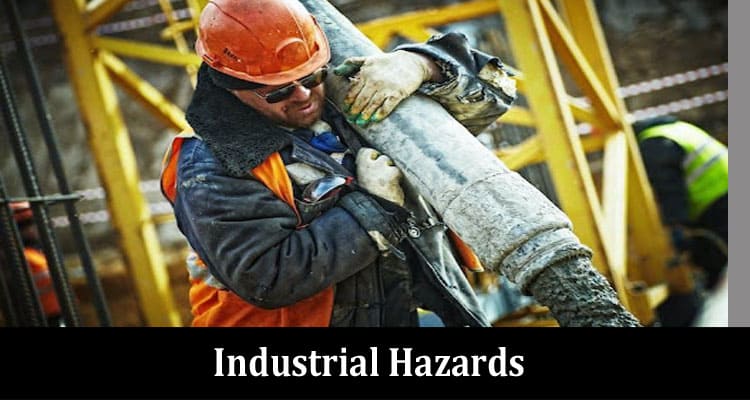Working in the industrial sector can be dangerous. It is further corroborated by the International Labor Organization (ILO), according to which more than 2.3 million women and men pass away from illnesses or accidents incurred at work. In other words, more than 6,000 workers die in a day because of their working conditions.
So, as an industrialist, you must find ways to mitigate these hazards and ensure your workers are always safe. Whether it’s ensuring they don’t slip, making sure the floor has enough friction, or training them to operate machines safely, you must go the extra mile to reduce the number of injuries at the workplace.
Here are some ways you can do this.
Educate Yourself on Industrial Safety
Industrial sites are busy locations. Far too many machines, equipment, and tools lying around can become a hazard for your workers. At the same time, exposed chemicals, contaminated water, and dust particles are constantly present in this environment, contributing to your worker’s declining health, which is why it’s essential to examine a location and vet it for your workers. This involves evaluating how safe the site is, what are the possible sources of pollution, and how to deal with these problems.
Examining and upgrading the safety standards of an industrial site is a comprehensive and lengthy process. You need to understand the rudimentary concepts of what it takes to enhance workplace safety, and the only way you can do this is by advancing your education and training. With various online industrial hygiene programs now being offered by reputed universities, it is easy to advance your education and gain the right skills to perform your job to the best of your abilities.
Arrange For A Workshop
Operating machines and working in any location is a skill-based job. Your workers must know how to use equipment safely, recognize when it needs maintenance, and store all tools away to prevent other workers from tripping over them. With time, equipment like jackhammers or the drill machine tends to vibrate more.
Excessive vibrations can cause muscle pain, hinder circulation and lead to long-term disabilities that can heavily downgrade your worker’s lifestyle. Hence, it would be best to arrange for frequent workshops so that they know how to operate and handle all these machines without getting injured in the process. Start by directing your workers to read the manual and allow them to familiarize themselves with the tool they plan on using. Teach them the angle with which they should hold the device, how far their body should be from the machine, and how often they should take breaks while using any tool.
Furthermore, educate them on hitting the emergency stop button and checking if the machine is turned off completely. When equipment is not stored correctly, it can fall on your employees, resulting in unavoidable injuries.
Ensure Workers Are Safe At A Height
There’s always the possibility that your workers may fall from a height, primarily when operating on projects requiring them to be at least three to nine feet from the ground. For example, if they’re stocking up the warehouse or fixing the ceiling of a building, they will need aerial platforms or scissor lifts to get themselves to that height. While these machines are safe, your worker must know how to stand on these platforms without leaning too close to the edge.
Furthermore, if they’re working on the side of a building, it’s best to use safety grapples and ropes so that they stay attached to the building and don’t plummet down. So when a worker needs to work at a height, teach them how to measure the site’s height, allowing them to prepare accordingly. From there, ensure they have the suitable PPE on, know how to operate the right aerial platform, and have a system of notifying their colleagues if they’re stuck or get wounded. Never allow workers to come down unless you’re sure they’re safe and will not free fall.
Keep Workers Safe From Slips and Falls
Industrial sites can get slippery. Sometimes the problem is with the floors; they are too frictionless for your workers to use. In other cases, your workers may be slipping cause of spilled substances that can make the floors tricky to walk on. Additionally, workers who choose to wear the wrong shoes also add to their chances of slipping and falling. This is why if you have marble flooring, line them with rubber or any layer that adds friction so that workers can walk without slipping. It can help if the workers are asked to use rubber boots or sneakers with a grip to minimize the risk of slipping and hurting themselves.
Chemical spills need to be appropriately drained. Simply mopping the puddle won’t be enough; instead, teach your employees how to spot the chemical spillage, the best way to clean it up, and inspect the place to ensure they’ve cleaned the surface thoroughly. The same goes for staircases; the steps must be lined with a rough texture to prevent workers from slipping while rushing down. Every staircase should have a stable guardrail, and the steps should be wide enough to give workers ample space to climb and descend.
Final Thoughts
Unmaintained industrial sites and untrained workers are a recipe for disaster. It doesn’t take much for workers to get injured on the job because of the poorly looked-after location and their lack of training. Work-related injuries can land workers in the hospital and, in extreme cases, cause death. Hence the only way you can prevent the situation from escalating to this level is by training your workers, ensuring they understand all the necessary safety guidelines put into place. You should also check in with them to see if they’re getting followed through.
Whether it’s locking away equipment, climbing a high-rise building, or draining a spill, your workers need to know what to do every step of the way to ensure they don’t jeopardize their lives.


